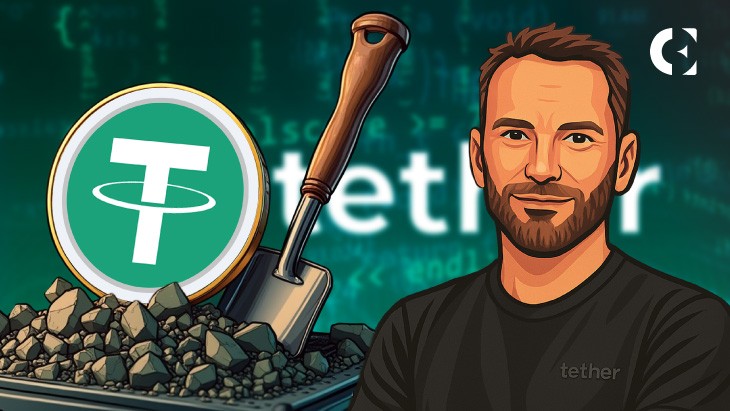Paolo Ardoino Confirms Tether's Mining Operating System Will Be Open Sourced by the End of the Year

Tether CEO Paolo Ardoino has confirmed that the company plans to release an open-source Bitcoin Mining OS (MOS) by the end of the year. The operating system is designed to work at various scales, from small home installations to large industrial mining farms containing hundreds of thousands of devices.
Testing the new version of Mining OS from Tether ⛏️
The open source development process is on track to be completed by the end of the year. pic.twitter.com/wTbaY7Rmxs
— Paolo Ardoino 🤖 (@paoloardoino) July 25, 2025
Ardoino said the current version of the OS is in the testing phase. MOS is said to feature a modular, peer-to-peer IoT architecture that supports a variety of configurations, including air and immersion cooling, as well as various electrical and cooling systems.
Tether's main goal is to reduce dependence on external providers, as MOS will give miners the ability to manage their own infrastructure, eliminating the need for proprietary software and reducing lock-in to specific providers.
With the public launch of its mining OS, Tether aims to lower barriers for new and small miners, which should encourage greater participation and increase decentralization of Bitcoin's computing power. Additionally, a more widely distributed miner base makes Bitcoin more resilient and less susceptible to centralization risks.
MOS is expected to be integrated with Tether’s decentralized AI platform QVAC, allowing for real-time performance reporting and optimization using machine learning. Ardoino recently stated that Tether could become the world’s largest Bitcoin miner by the end of 2025, surpassing publicly traded mining companies.
Beyond Mining OS
Effective September 1, 2025, Tether will suspend USDT buybacks and freeze balances on the Algorand, EOS, Omni, Kusama, and Bitcoin Cash SLP platforms. These networks are considered legacy, their usage is declining, and liquidity remains low.
The platform will focus on networks with high developer activity and scalability, primarily Ethereum, Tron, and some second-layer networks.
A few months ago, Tether partnered with mining pool Ocean to distribute computing resources, clearly aimed at decentralizing the block creation process. Tether also recently acquired a 70% stake in South American agricultural company Adecoagro for about $600 million. The goal of this deal is to integrate USDT into commodity trading, streamline cross-border settlements, and possibly use renewable energy to mine Bitcoin.
Speaking of USDT, it continues to be the world's leading stablecoin, accounting for over 60% of the market, with a market cap exceeding $160 billion and daily trading volume that often exceeds $150 billion.
Related: Tether CEO Outlines 2025 Roadmap: Bitcoin Mining, AI, and USDT's US Compliance
Disclaimer: The information provided in this article is for informational and educational purposes only. This article does not constitute financial advice or any other form of advice. Coin Edition is not responsible for any losses incurred as a result of using the content, products or services mentioned. Readers are advised to exercise caution before taking any action related to the company.
Source: cryptonews.net



